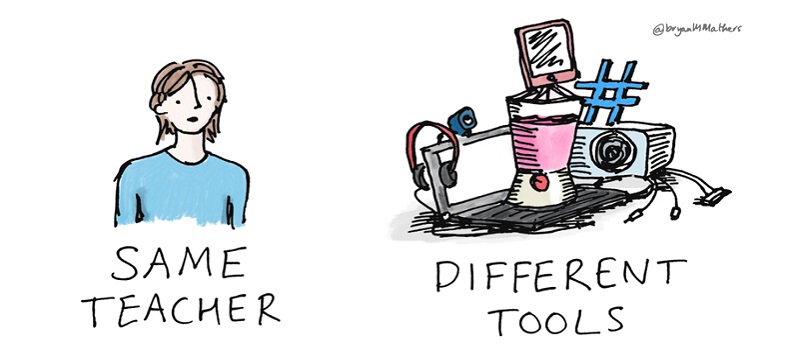1.1 Teacher reflections
Every week we will present case studies by teachers who have moved their teaching online. This provides you with a real world experience related to each week’s material. At the same time, this also highlights how simple video clips can be produced and used for online teaching purposes.
This week we have Dr. Myo Aung. His experiences reflect a few of the concepts we introduce this week and will discuss further in the weeks to come:

“My name is Dr. Myo Aung and I am a chemistry teacher. I have worked at one of the established universities for over four years and I teach several hundred second and third year students. I want to tell you today about how I started to move my teaching online. After completing several courses delivered online about online education, I started adopting some online elements in my teaching. It seems to be going well, and I want to have some conversations with the university about expanding these online elements.
My university has been trialling online synchronous classes and I have been part of this trial. So the students all log in at the same time as I do, and we have a class, all together, in real time. Within the software we are using, the students can see my prepared slides, they can hear me talking, and there is a setting that I can choose to allow them to speak to me and to each other. I have been experimenting with allowing them to speak at all times, or only at times that I permit them to do so. The software also has a whiteboard tool, to enable me to draw on the screen and annotate my slides, and I can also pass control of this to the students to allow them to, for example, tick boxes on the screen or place data points on a graph. Some of the students do not have a microphone, or more often are in places where they cannot speak loudly, such as computer labs or even workplaces, so we also have a chat facility enabled in the software that allows them to type messages to me and to each other. They tend to use this quite formally, there is not much ‘frivolous’ or ‘social’ chat apart from saying hello to each other at the start and goodbye at the end.
I set them tasks during the online synchronous session for them to do in their own time before the next class, just as I would do in a physical classroom. At the moment I sometimes ask them to email me their work, but hopefully soon the university will have an automated system where the students can submit their work online and it will come through to me after being logged in the ‘system’. This will help me as I could download all the students’ work in one big batch and take them home to mark, rather than getting emails at all times of day and having to remember to save the work into a particular folder to download before I go home - an automated system will be more reliable than my memory!
One of the main advantages the students have reported about the online sessions is that they can watch the recording again after the synchronous session, so they can cover and re-cover difficult topics until they are sure they understand it. Usually the tasks I give them to complete are based around developing this thorough understanding of one of the core topics.
One big advantage that I had not previously thought about was revealed to me a few months ago. One of my colleagues in the chemistry department was involved in a vehicle accident and required to take two whole months off work. During that period I could invite his students to attend my online classes without any difficulty (it would have been difficult to find space for them in the physical classroom) and several other tutors who have been involved in the online teaching experiment also did the same. These students also had access to the recordings of the synchronous sessions. So they were not really disadvantaged much by their teacher’s absence. And when my colleague was starting to become well again and returned to work, he was able to deliver his lessons online on occasions when he felt too weak to attend the classroom.
If you are thinking of moving your teaching online, I would definitely say you should try it. It requires some learning, and your teaching and methods need to be adapted to some extent, but the advantages to your students are really numerous.”
1 Synchronous and asynchronous modes of teaching
